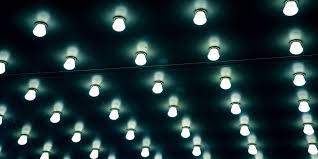Lighting is an essential aspect of our daily lives, whether it is for functional or aesthetic purposes. With the advancements in technology, there has been a significant shift in the lighting industry, and LED lighting has emerged as a clear winner. LED lighting is transforming the way we light our homes, offices, streets, and more. It offers a range of benefits over traditional lighting solutions, and in this article, we will explore them in-depth.
LED lighting is becoming increasingly popular in homes, as people are realizing the benefits of this technology. LED lighting is a great alternative to traditional incandescent bulbs, as they consume less energy and have a longer lifespan. LED lighting is also available in a range of colors and intensities, making them highly versatile in terms of design and aesthetics.
What is LED Lighting?
LED lighting is a type of lighting that utilizes Light Emitting Diodes to produce light. Unlike traditional incandescent bulbs, which produce light by heating a filament until it glows, LED lighting uses semiconductors to convert electrical energy into light. This technology allows for the creation of highly energy-efficient lighting solutions that offer a range of benefits.
How Do LED lighting Work?
LED lighting work by passing an electric current through a semiconductor, which causes the release of energy in the form of photons. These photons create visible light, which can be manipulated in terms of color and intensity. LED lights can be made up of a single LED or a cluster of LEDs, depending on the desired output.
Types of LED Lighting: An Overview
LED lighting has revolutionized the way we light up our homes, offices, and streets. These energy-efficient and long-lasting lights are becoming increasingly popular, not just because of their economic benefits but also because of the aesthetic appeal they offer. LEDs are available in a variety of types, each suited to a specific need. In this article, we will discuss the most common types of LED lights and their applications.
LED Bulbs
LED bulbs are the most common type of LED lights used in homes and offices. They are designed to replace incandescent bulbs, which are much less energy-efficient. LED bulbs come in different shapes and sizes, making them suitable for various lighting needs. They also offer a range of color temperatures, from warm white to cool white, making them ideal for creating different moods.
LED Tubes
LED tubes are designed to replace fluorescent tubes. They are more energy-efficient and have a longer lifespan than fluorescent tubes. LED tubes are available in various lengths and diameters, making them suitable for different applications. They are commonly used in offices, warehouses, and parking lots.
LED Panels
LED panels are flat, thin fixtures that are mounted on ceilings or walls. They offer a sleek and modern look, making them ideal for modern offices and homes. LED panels are available in various sizes, and they offer a range of color temperatures, making them suitable for various applications.
LED Strip Lights
LED strip lights are flexible, thin strips of LEDs that can be cut to fit any length. They are commonly used for accent lighting, under cabinet lighting, and backlighting. LED strip lights come in various colors, making them ideal for creating different moods and effects.
LED High Bay Lights
LED high bay lights are designed to provide bright and efficient lighting in high-ceiling spaces, such as warehouses and factories. They are energy-efficient and have a long lifespan, making them a cost-effective alternative to traditional high bay lights.
LED Flood Lights
LED flood lights are designed to provide bright and even illumination over a large area. They are commonly used for outdoor lighting, such as in parking lots, stadiums, and public spaces. LED flood lights are available in different sizes and shapes, making them suitable for various applications.
LED Street Lights
LED street lights are designed to replace traditional street lights, which are less energy-efficient and have a shorter lifespan. They are designed to provide bright and even illumination over a large area, making them ideal for lighting up streets and highways. LED street lights are available in different sizes and shapes, making them suitable for different applications.
Conclusion
In conclusion, LED lighting has come a long way in recent years, and it has become an essential part of our lives. With various types of LED lights available in the market, we have the luxury of choosing the best fit for our needs. From LED bulbs to street lights, LED lighting offers an energy-efficient, long-lasting, and cost-effective lighting solution for any space.
FAQs
What is the lifespan of an LED light?
LED lights have a lifespan of up to 50,000 hours or more, depending on the quality of the LED chip and the design of the fixture.
Are LED lights more expensive than traditional lighting technologies?
LED lights are initially more expensive than traditional lighting technologies, but they are more cost-effective in the long run due to their energy efficiency and long lifespan.
Can LED lights be used outdoors?
Yes, LED lights can be used outdoors. They are designed to be durable and long-lasting, making them a popular choice for outdoor lighting applications.
What are the benefits of using LED flood lights?
LED flood lights are energy-efficient, customizable, and designed to illuminate large areas. They are a popular choice for outdoor lighting applications, such as illuminating sports fields and creating ambiance in outdoor spaces.
What are the benefits of using LED street lights?
LED street lights are energy-efficient, durable, and long-lasting, making them a popular choice for municipalities and city planners. They can help reduce energy consumption and greenhouse gas emissions while providing bright, safe lighting for streets and roadways.








